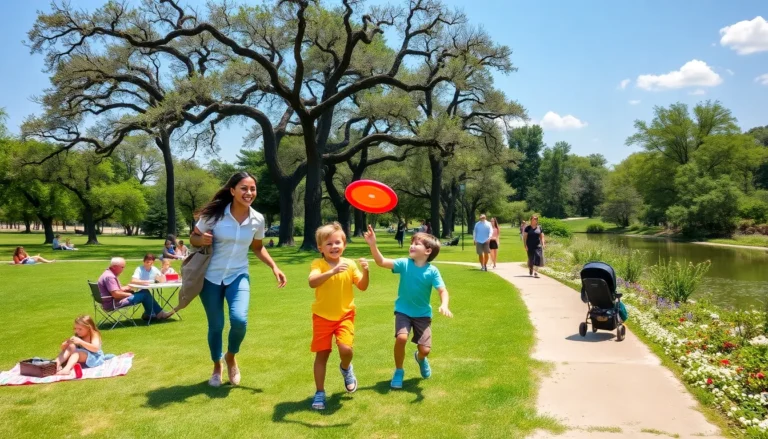Childbirth isn’t just a medical event; it’s a grand spectacle filled with rituals and traditions that have been passed down through generations. From quirky practices to heartfelt ceremonies, cultures around the world celebrate the arrival of new life in ways that can leave you both chuckling and misty-eyed. Ever heard of a baby shower where the mom-to-be is serenaded by a chorus of well-wishers while balancing a watermelon?
Table of Contents
ToggleOverview of Rituals and Traditions of Childbirth
Childbirth rituals and traditions vary widely across cultures, each carrying its own significance. Many communities celebrate the event through unique customs that emphasize joy and connection. Expectant mothers often partake in ceremonies designed to invoke blessings for the baby. For example, in some African cultures, midwives engage in special songs and dances to welcome the new life.
Localized practices frequently involve family and friends, reinforcing the community’s role in the celebration. In Latin America, the “La Pascua” involves a gathering where loved ones bless the baby and the mother, creating a sense of support and unity. Sharing stories about past births serves to bond generations together.
Activities during pregnancy also bear significance. In Japan, rituals like “Haruka,” where pregnant women visit local shrines, promote health and well-being. Communities often hold onto these traditions, as they provide comfort and highlight important cultural narratives.
Throughout various regions, food plays an essential role in these gatherings. In India, special meals prepared with care symbolize the nourishment and love that extend to the newborn. Such culinary customs reflect the merging of cultural heritage with the excitement surrounding childbirth.
Traditional gifts further enhance the celebration to express love. In many cultures, handmade items such as quilts or clothing represent care and connection, demonstrating the community’s investment in the child’s future. Notably, each of these rituals carries both practical and symbolic meanings, illustrating the shared values surrounding childbirth.
Rituals and traditions of childbirth create bonds that go beyond the individual, emphasizing communal support while celebrating new beginnings. They enrich the experience, intertwining personal and cultural narratives that mark this significant life event.
Historical Context

Childbirth rituals and traditions have evolved throughout history, reflecting the values and beliefs of various cultures. From ancient practices to modern celebrations, these customs play a significant role in the perception of birth.
Ancient Practices
Many ancient societies performed rituals to ensure a smooth delivery and protect mother and child. For instance, the Egyptians engaged in incantations, invoking deities for favor and safety. Similarly, in the Roman Empire, childbirth was surrounded by rites that included offerings to gods, believing these acts would bring good fortune. Folk traditions often involved midwives, who guided families through the birthing process, utilizing herbal remedies and spiritual practices. These rituals often emphasized community involvement, reflecting the collective responsibility of nurturing new life.
Cultural Significance
Various cultures regard childbirth as a pivotal life event, deeply intertwined with their social fabric. Ceremonies often celebrate the passage into motherhood, reinforcing bonds within families and communities. In many traditions, songs, dances, and feasts accompany the arrival of a new child, highlighting joy and gratitude. Spiritual beliefs enrich these practices, with symbols of protection and blessings weaving through customs. The communal aspect fosters support, where everyone contributes to the well-being of the mother and the newborn, reinforcing collective values and cultural identity.
Common Rituals in Different Cultures
Childbirth rituals vary significantly across cultures, each embodying unique traditions that celebrate new life. These practices foster community involvement while highlighting the significance of the family bond.
African Traditions
In many African cultures, specific rituals celebrate the arrival of a newborn. Ceremonies often include songs and dances, where midwives lead the festivities, invoking blessings for the mother and child. Communal gatherings play a vital role, reinforcing support systems and sharing wisdom. After childbirth, naming ceremonies, like the Maasai’s “Enkanywa,” create a strong identity for the child, linking them to family heritage and community.
Asian Customs
Asian customs often emphasize health and wellness during pregnancy. In Japan, the “Haruka” tradition involves pregnant women visiting shrines to pray for a safe delivery. Chinese culture celebrates with the “Full Month” festival, where families host gatherings to mark the first month of the baby’s life, highlighting gratitude and community support. Rituals may also include specific meals believed to nourish the mother and promote recovery, thus connecting food, health, and tradition seamlessly.
European Practices
European childbirth traditions reflect deep-rooted historical beliefs. In some regions, a “baptism” occurs shortly after birth to bless the child and integrate them into the faith community. Rituals may include handing down heirloom garments, symbolizing familial ties and continuity. In Italy, the “Battesimo” celebrates this sacred moment with communal feasting, while the Czech tradition features a “salt ceremony” to ward off evil spirits and ensure protection for the newborn.
Indigenous Traditions
Indigenous cultures maintain rich traditions surrounding childbirth, often rooted in spirituality and ancestral practices. Many tribes conduct naming ceremonies that invite the spirit of the child, celebrating their arrival through storytelling and rituals. For instance, in some Native American cultures, a woman may receive herbal blessings to promote health and strength during childbirth. This emphasis on the connection between mother, child, and community fosters a profound sense of belonging and identity, marking the beginning of the child’s journey within the tribe.
Modern Interpretations of Childbirth Rituals
Modern interpretations of childbirth rituals reflect a blend of tradition and contemporary practices. Various cultures integrate age-old customs with new influences, adapting rituals to fit current societal norms.
Evolution Over Time
The evolution of childbirth rituals highlights how cultural beliefs shape practices. In the past, rituals centered around community participation, often involving midwives using herbal remedies. Over time, societal changes led to the integration of medical advancements, influencing how these rituals are performed. Despite these shifts, many cultures retain core elements, like communal support and spiritual blessings, emphasizing the importance of connection during childbirth.
Influence of Technology
Technology plays a significant role in redefining childbirth rituals. Many expectant parents now use apps to track pregnancy milestones and connect with others in their communities. Virtual gatherings have emerged, allowing families to participate in rituals remotely. Social media platforms showcase diverse childbirth experiences, sharing stories and customs worldwide. These innovations highlight how modern technology enhances the accessibility and expression of traditional rituals, fostering a broader sense of community support during childbirth.
Personal Stories and Experiences
Expectant parents often share memorable experiences tied to childbirth rituals. In many South Asian families, vibrant “Godh Bharai” celebrations take place, honoring the mother-to-be. Friends and family offer gifts and blessings, creating an atmosphere filled with joy and anticipation.
Community celebrations serve as a key element in African cultures. Midwives lead groups in traditional songs and dances, celebrating the mother and her journey. These ceremonies not only invoke blessings but also emphasize community support for the newborn.
European traditions offer equally rich experiences. For instance, baptisms symbolize the spiritual welcoming of a child into the faith. Families often gather for these events, reinforcing deep familial connections that last a lifetime.
In Japan, rituals like “Haruka” highlight the importance of well-being. Pregnant women visit shrines to pray for the health of their unborn child. These practices embody hope and cultural identity, connecting individuals to their heritage.
Modern interpretations also add a unique twist. Virtual baby showers have gained popularity, enabling distant family members to participate. Shared moments over video calls create bonds that transcend geographical boundaries.
Personal stories often reveal the deep emotional connections attached to these traditions. Many participants describe the feeling of unity experienced during community gatherings. Shared laughter and tears create lasting memories for mothers and families.
Traditions evolve, but their significance remains strong. Personal accounts illustrate how these rituals adapt while retaining core values of support and celebration. The intimacy of childbirth experiences is enriched by the unique cultural practices passed down through generations.
Childbirth rituals and traditions serve as powerful reminders of the joy and connection that accompany the arrival of new life. They highlight the importance of community involvement and cultural identity, weaving together personal experiences and shared values.
As these practices evolve in response to modern influences, they continue to foster support and celebration among families and communities. The blend of tradition and contemporary elements reflects society’s ongoing commitment to honoring the journey of motherhood.
Ultimately, these rituals enrich the experience of childbirth, creating lasting memories and deepening the bonds that unite families across generations.








